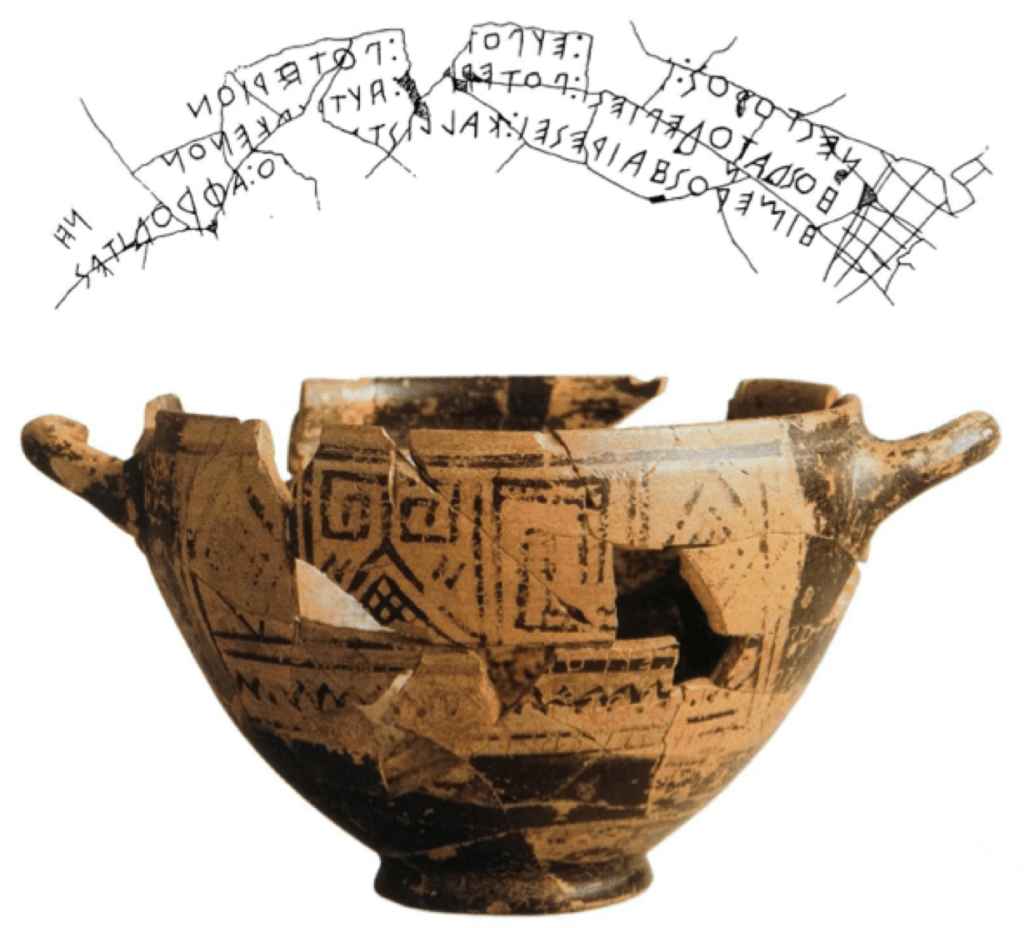- Νέστορος [εἰμὶ] εὔποτ[ον] ποτήριο[ν]·
ὃς δ’ ἂν τοῦδε π[ίησι] ποτηρί[ου] αὐτίκα κῆνον - ἵμερ[ος αἱρ]ήσει καλλιστ[εφάν]ου Ἀφροδίτης.
“I am Nestor’s cup, good to drink from. Who happens to drink of this vessel, forthwith the desire of fair-crowned Aphrodite shall seize him.”
These are some of the very fist lines ever written in the Greek alphabet, which was later to be developed by the Romans into the writing medium used by most European languages today. They are scratched, from right to left, into the side of a vase, dating from around 730 BC, found off the coast of Naples in Pithekoussai, a Greek trading port. What is most remarkable about them is that they are not just a dull piece of prosaic information, about the owner of the vase, for example – they are hexameters: the meter used by Greek bards from time immemorial to sing the tales of their heroes, their great battles and the ever watchful gods on snowy Olympus. The Greeks learned to write to become poets – and what poets did they become!


